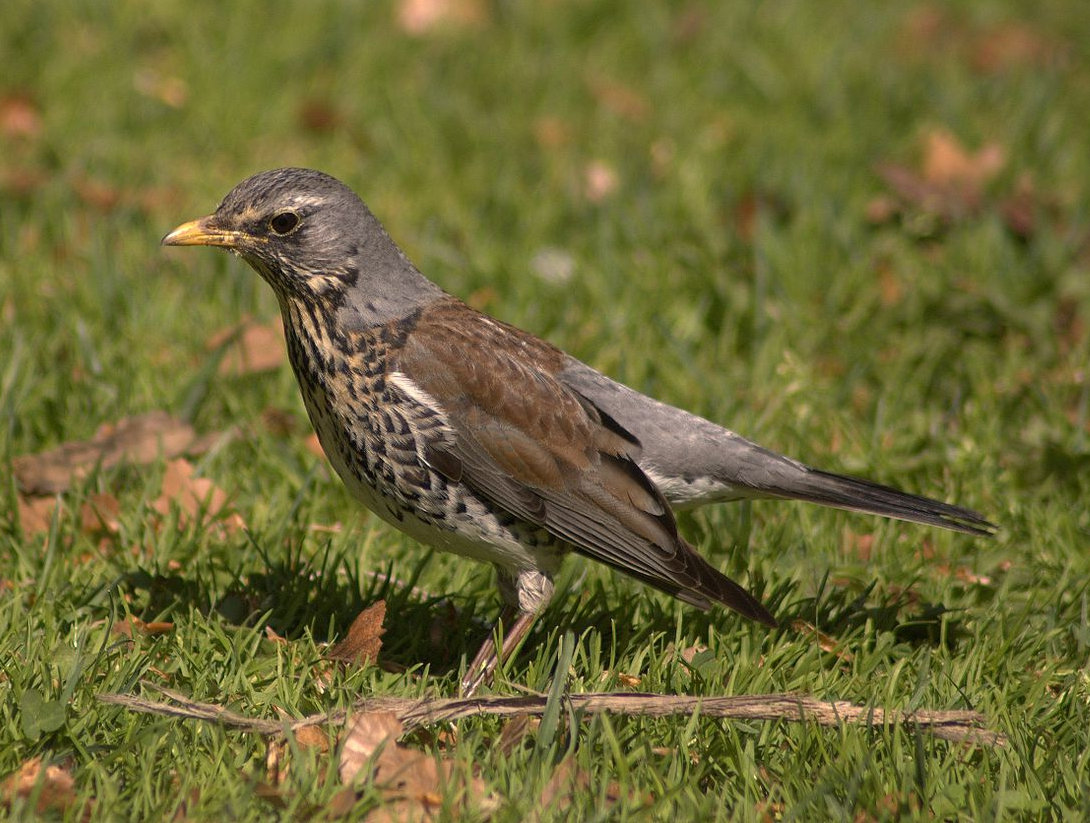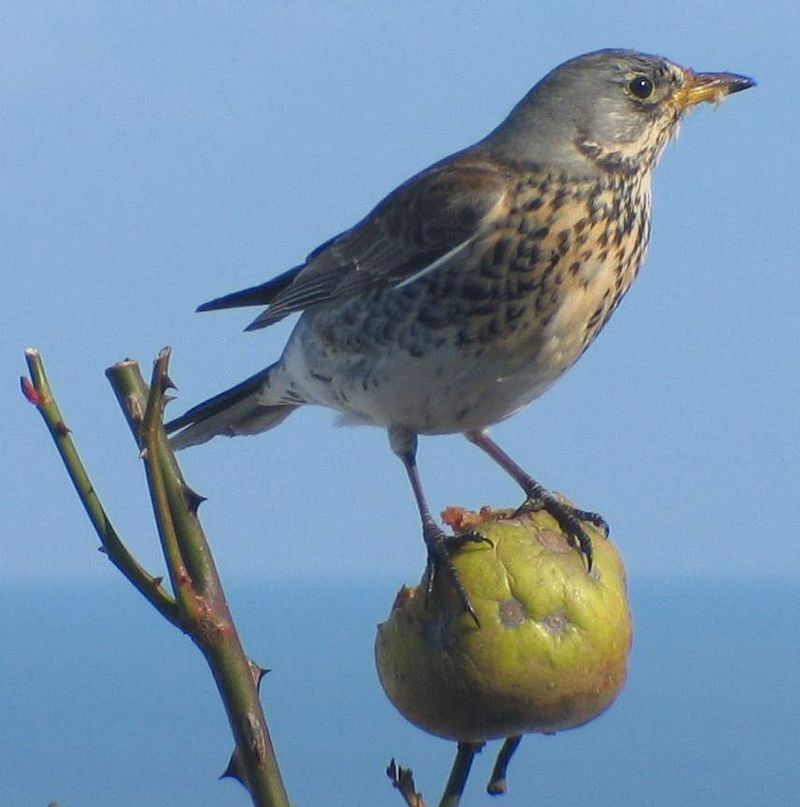Garden Wildlife
Garden Wildlife



What do they eat?
They will eat invertebrates, but as winter visitors in Britain and Ireland they mainly exploit fruit and berries
Where do they breed?
Fieldfare are winter visitors and only very rarely breed in northern Britain. Their breeding grounds are in wooded areas of northern Europe and Russia.
What do they do?
Fieldfare arrive in early October and are gone by mid-April. Like other winter thrushes they are seen in gardens in mixed-species groups, often picking at late windfall apples or digging for worms and larvae. They are very stroppy birds and will attack predators and competitors.
How are they doing?
We have an estimated 720,000 winter visiting fieldfares, but only a tiny number stay on and breed. They are red-listed in the UK for conservation, because of declining breeding success.
Finding out more:
BTO profile on fieldfare
RSPB profile on fieldfare
Page writtten and compiled by Steve Head
Fieldfare Turdus pilaris
A large and handsome winter-visiting thrush, often seen in mixed flocks with other thrush species. They are recorded in about 6% of gardens.

What do they look like?
Bigger (26cm) than a song thrush, but slightly smaller than a mistle thrush, the fieldfare is distinguished by a pale blue-grey head and rump, a chestnut-brown back and black tail. They are pale underneath, with spotting mainly on the breast. Sexes are alike.
What do they sound like?
Their call is a cross “chack-chack” sound, while the song is a rather subdued and random set of squeaky notes.
Song Call
Niels Van Doninck, XC686589. Accessible at www.xeno-canto.org/686589.
Lars Edenius, XC700188. Accessible at www.xeno-canto.org/700188.
Fieldfare Turdus pilaris
A large and handsome winter-visiting thrush, often seen in mixed flocks with other thrush species. They are recorded in about 6% of gardens.


What do they look like?
Bigger (26cm) than a song thrush, but slightly smaller than a mistle thrush, the fieldfare is distinguished by a pale blue-grey head and rump, a chestnut-brown back and black tail. They are pale underneath, with spotting mainly on the breast. Sexes are alike.
What do they sound like?
Their call is a cross “chack-chack” sound, while the song is a rather subdued and random set of squeaky notes.
Song Call
What do they eat?
They will eat invertebrates, but as winter visitors in Britain and Ireland they mainly exploit fruit and berries
Where do they breed?
Fieldfare are winter visitors and only very rarely breed in northern Britain. Their breeding grounds are in wooded areas of northern Europe and Russia.
What do they do?
Fieldfare arrive in early October and are gone by mid-April. Like other winter thrushes they are seen in gardens in mixed-species groups, often picking at late windfall apples or digging for worms and larvae. They are very stroppy birds and will attack predators and competitors.
How are they doing?
We have an estimated 720,000 winter visiting fieldfares, but only a tiny number stay on and breed. They are red-listed in the UK for conservation, because of declining breeding success.
Finding out more:
Page writtten and compiled by Steve Head
























